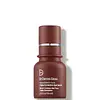What's inside
What's inside
 Key Ingredients
Key Ingredients

 Benefits
Benefits

 Concerns
Concerns

 Ingredients Side-by-side
Ingredients Side-by-side

Water
Skin ConditioningButyrospermum Parkii Butter
Skin ConditioningPropanediol
SolventNiacinamide
SmoothingCetearyl Olivate
Sorbitan Olivate
EmulsifyingAscorbyl Glucoside
AntioxidantDimethyl Isosorbide
SolventSqualane
EmollientCetyl Alcohol
EmollientPhenoxyethanol
PreservativeHydroxyethyl Acrylate/Sodium Acryloyldimethyl Taurate Copolymer
Emulsion StabilisingGluconolactone
Skin ConditioningSodium Hydroxide
BufferingHydroxypinacolone Retinoate
Skin ConditioningSodium Stearoyl Glutamate
CleansingSodium Benzoate
MaskingPolysorbate 60
EmulsifyingDisodium EDTA
Ethylhexylglycerin
Skin ConditioningSorbitan Isostearate
EmulsifyingCalcium Gluconate
HumectantWater, Butyrospermum Parkii Butter, Propanediol, Niacinamide, Cetearyl Olivate, Sorbitan Olivate, Ascorbyl Glucoside, Dimethyl Isosorbide, Squalane, Cetyl Alcohol, Phenoxyethanol, Hydroxyethyl Acrylate/Sodium Acryloyldimethyl Taurate Copolymer, Gluconolactone, Sodium Hydroxide, Hydroxypinacolone Retinoate, Sodium Stearoyl Glutamate, Sodium Benzoate, Polysorbate 60, Disodium EDTA, Ethylhexylglycerin, Sorbitan Isostearate, Calcium Gluconate
Water
Skin ConditioningPropylene Glycol
HumectantEthoxydiglycol
HumectantBakuchiol
AntimicrobialRetinol
Skin ConditioningNephelium Lappaceum Leaf Extract
Skin ConditioningFerulic Acid
AntimicrobialUbiquinone
AntioxidantQuercetin
AntioxidantCamellia Sinensis Leaf Extract
AntimicrobialSodium Hyaluronate
HumectantSaccharide Isomerate
HumectantPhospholipids
Skin ConditioningCentella Asiatica Extract
CleansingCaffeine
Skin ConditioningSalix Alba Bark Extract
AstringentSalicylic Acid
MaskingArctostaphylos Uva-Ursi Leaf Extract
Skin ConditioningMorus Alba Bark Extract
Skin ConditioningGlycyrrhiza Glabra Root Extract
BleachingPotassium Azeloyl Diglycinate
Skin ConditioningGlycolic Acid
BufferingPanthenol
Skin ConditioningButylene Glycol
HumectantTetrapeptide-21
Skin ConditioningCaprylic/Capric Triglyceride
MaskingGlycerin
HumectantLeuconostoc/Radish Root Ferment Filtrate
AntimicrobialMandelic Acid
AntimicrobialPotassium Hydroxide
BufferingMaltodextrin
AbsorbentPvm/Ma Decadiene Crosspolymer
Polysorbate 20
EmulsifyingCitric Acid
BufferingSodium Citrate
BufferingPhenoxyethanol
PreservativeSodium Benzoate
MaskingPotassium Sorbate
PreservativeIron Oxides
Water, Propylene Glycol, Ethoxydiglycol, Bakuchiol, Retinol, Nephelium Lappaceum Leaf Extract, Ferulic Acid, Ubiquinone, Quercetin, Camellia Sinensis Leaf Extract, Sodium Hyaluronate, Saccharide Isomerate, Phospholipids, Centella Asiatica Extract, Caffeine, Salix Alba Bark Extract, Salicylic Acid, Arctostaphylos Uva-Ursi Leaf Extract, Morus Alba Bark Extract, Glycyrrhiza Glabra Root Extract, Potassium Azeloyl Diglycinate, Glycolic Acid, Panthenol, Butylene Glycol, Tetrapeptide-21, Caprylic/Capric Triglyceride, Glycerin, Leuconostoc/Radish Root Ferment Filtrate, Mandelic Acid, Potassium Hydroxide, Maltodextrin, Pvm/Ma Decadiene Crosspolymer, Polysorbate 20, Citric Acid, Sodium Citrate, Phenoxyethanol, Sodium Benzoate, Potassium Sorbate, Iron Oxides
Alternatives
Ingredients Explained
These ingredients are found in both products.
Ingredients higher up in an ingredient list are typically present in a larger amount.
Phenoxyethanol is a preservative that has germicide, antimicrobial, and aromatic properties. Studies show that phenoxyethanol can prevent microbial growth. By itself, it has a scent that is similar to that of a rose.
It's often used in formulations along with Caprylyl Glycol to preserve the shelf life of products.
Sodium Benzoate is a preservative. It's used in both cosmetic and food products to inhibit the growth of mold and bacteria. It is typically produced synthetically.
Both the US FDA and EU Health Committee have approved the use of sodium benzoate. In the US, levels of 0.1% (of the total product) are allowed.
Sodium benzoate works as a preservative by inhibiting the growth of bacteria inside of cells. It prevents the cell from fermenting a type of sugar using an enzyme called phosphofructokinase.
It is the salt of benzoic acid. Foods containing sodium benzoate include soda, salad dressings, condiments, fruit juices, wines, and snack foods.
Studies for using ascorbic acid and sodium benzoate in cosmetics are lacking, especially in skincare routines with multiple steps.
We always recommend speaking with a professional, such as a dermatologist, if you have any concerns.
Learn more about Sodium BenzoateWater. It's the most common cosmetic ingredient of all. You'll usually see it at the top of ingredient lists, meaning that it makes up the largest part of the product.
So why is it so popular? Water most often acts as a solvent - this means that it helps dissolve other ingredients into the formulation.
You'll also recognize water as that liquid we all need to stay alive. If you see this, drink a glass of water. Stay hydrated!
Learn more about Water